OptiMSM® Powder
OptiMSM® Powder
- The most pure form of MSM
- Easy for the body to absorb
- Suitable for vegetarians and vegans
Description
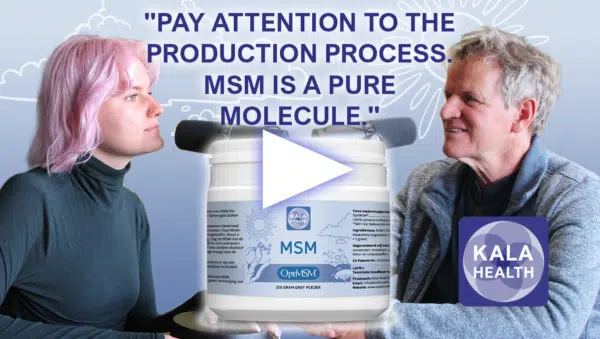
OptiMSM® Powder
MSM is a very small, light molecule, making it very easily absorbed by the body. MSM is the form in which sulfur naturally occurs in all living organisms and in which it is biologically active. Naturally, MSM is found in fruits, vegetables, and in the milk of cows grazing in pastures. Kala Health also offers an MSM powder that you can quickly and easily order through our webshop.
What is OptiMSM®?
Key information about OptiMSM® at a glance:
- OptiMSM® is the highest quality MSM in the world, produced in the United States by Bergstrom Nutrition
- OptiMSM® consists of 100% pure MSM, with no further additives
- OptiMSM® is purified through quadruple distillation and is therefore virtually free of impurities
- Kala Health offers OptiMSM® ‘Coarse’ powder in four different packaging options: 250 grams, 500 grams, 1 kg, and 5 kg
- All packages contain convenient measuring scoops, making it easy to dose the MSM correctly
- Suitable for vegetarians and vegans
The Included Measuring Scoop
Kala Health’s MSM powder comes with a handy included measuring scoop. The 250-gram and 500-gram jars contain a single-sided scoop. One level scoop contains 1 gram of OptiMSM® powder. The 1 kg and 5 kg packages contain a double-sided scoop. One level scoop contains 4 grams and 12 grams of OptiMSM® powder, respectively.
Please note!
You can dissolve MSM powder in water up to a concentration of 4 grams per liter without actually tasting the MSM. At higher concentrations, the water takes on a bitter taste, where the more MSM, the stronger the taste. By dissolving the MSM in, for example, fruit juice instead of water, you can somewhat mask the bitter taste of MSM.
OptiMSM®: The Purest Form of MSM
MSM (methylsulfonylmethane) is a small molecule with great significance for the body. The chemical formula of MSM is CH3SO2CH3. It is a small, light molecule with a molecular weight of 94. As a result, MSM is very easily absorbed by the body. MSM is the form in which sulfur naturally occurs in all living organisms, and in which it is biologically active. Naturally, MSM is found in fruits, vegetables, and, for example, in the milk of pasture-grazing cows. It is an odorless, white powder that dissolves well in warm water and in a large number of organic solvents.
MSM was already studied in the 1960s by scientists at the Health Sciences University in Oregon, USA, led by Professor Stanley W. Jacob, M.D. Dr. Jacob documented his experiences in several books: “The Miracle of MSM, the Natural Solution for Pain” (1999) and “MSM, the Definite Guide” (2003).
OptiMSM® is the purest MSM available, produced by Bergstrom Nutrition in the United States and uniquely purified through multiple distillation processes. OptiMSM® is also the only MSM with published, peer-reviewed research. OptiMSM® is the only MSM in the world produced according to the global patents of Robert J. Herschler.
The Different Types of MSM
There are two qualities of OptiMSM® powder. First, there is the fine powder, known as the ‘Microprill’ quality. This is a fine powder whose crystals easily stick together. This quality is mainly intended for tableting, requiring very few fillers. To keep the powder workable, 0.1% silicon dioxide is added (silicon dioxide is nothing more than finely ground sand!). So, you could say that this quality of OptiMSM® is 99.9% pure.
The second quality of OptiMSM® is the coarse powder, known as the ‘Flake’ quality. These crystals are coarser and stick together less. ‘Flakes’ are primarily intended to be mixed into feed and dissolved in water or fruit juice. However, due to the larger crystals, dissolving takes a bit longer than with ‘Microprills’. OptiMSM® ‘Flakes’ not only mix more easily with food, but no silicon dioxide is added. Therefore, you could say that the ‘Flake’ quality is 100% pure.
The “Primitive” Source of Sulfur
The element sulfur belongs to the same main group as the element oxygen. Sulfur and oxygen are therefore closely related. In oxygen-free environments, organisms often use sulfur instead of oxygen as a source of energy. In 1986, an underground cave was discovered in Romania that likely had not been in contact with the outside world for five million years. A total of 48 new invertebrate species were discovered in the cave. These animals owe their existence to warm, upwelling, sulfur-rich water that fills the cave with high concentrations of hydrogen disulfide (H2S). For humans, this sulfur-rich gas would be deadly. For the bacteria, fungi, and animals in the cave, it forms the basis of life.
We must remember that hundreds of millions of years ago, oxygen was scarcely present on Earth. Only after land plants began to develop did the oxygen level in the atmosphere rise. It then took a very long time for the oceans to absorb the oxygen. We know that hundreds of millions of years ago, algae in the oceans began to produce simple organic sulfur compounds, such as MSM. These sulfur compounds were probably the first and most important energy sources for all life forms that developed thereafter. This supports the idea that higher life forms may be genetically programmed to use MSM as a sulfur source.
In various studies with laboratory animals, MSM was used, where the sulfur was made radioactive (35S). These studies showed that after oral intake, MSM is partially broken down, and the released sulfur is utilized by the body. The radioactive sulfur (35S) was found in the collagen and keratin of hair and nails. Surprisingly, radioactive sulfur was also found in the amino acids methionine and cysteine, and in the proteins of blood serum. This discovery proves that sulfur from MSM is incorporated into what is known as the methionine metabolism.
The “Primitive” Supplier of Methyl Groups
Methyl groups are the building blocks from which all organic molecules are constructed. The body is constantly breaking down and rebuilding tissues and cells. Millions of times per second, methyl groups are made available to molecules in our body. This process, called methylation, affects all life processes. The formation of many molecules, including certain neurotransmitters like choline, serotonin, norepinephrine, and adrenaline, also depends on methyl groups.
The interesting fact is that the MSM molecule is composed of two methyl groups and one sulfur atom (as a sulfate group). An MSM molecule is broken down in the body into a sulfate (sulfur) group and two methyl groups, leaving no residual waste. It is almost certain that MSM was an important and perhaps the only supplier of methyl groups for the primitive life forms that developed hundreds of millions of years ago. Are all other life forms that subsequently evolved genetically programmed to use MSM as a methyl donor? It appears so.
The half-life of MSM in the body is approximately 48 hours, and even after 480 hours, MSM can still be detected in the urine. This makes MSM the most stable source of sulfur and methyl groups for the body.
MSM: Natural or Synthetic?
Many people struggle with the question of what exactly the source of MSM is. Is it natural or synthetic? Is it plant-based? Some producers claim that their MSM is ‘distilled from pine trees’. We also regularly encounter the claim that MSM is ‘of natural origin’ or even ‘organic’. Recently, we even heard of a distributor claiming that their MSM is entirely plant-based, produced from vegetable oils like flaxseed oil.
MSM is a natural substance found in the human body and many foods. The richest source of MSM is breast milk, in concentrations of no more than a few milligrams per liter.
In theory, MSM could be extracted from pine trees. However, we would need to cut down most of the pine trees on Earth to get a reasonable amount of MSM. Practically speaking, this is impossible, as is the claim that MSM is ‘of natural origin’ or ‘organic’. All MSM on the market today is not derived from trees, plants, or oils. You cannot isolate, extract, or grow MSM; a chemical reaction is required to produce it.
The American manufacturer Cardinal Nutrition (now: Bergstrom Nutrition) was the first to use wastewater from the paper industry as a raw material for the production of MSM. From this wastewater, the substance lignin was extracted, which was further converted into DMS by binding it to sulfur. It was then converted into DMSO, and subsequently into MSM.
This is what the production process looks like:
Natural ingredient (lignin) in wastewater → CH3 (methyl groups)
CH3 (methyl groups) → chemical process → DMS
DMS → chemical process → DMSO
DMSO → chemical process → MSM
Question: how ‘natural’ can you call MSM that is produced in this manner? You can’t even call it ‘semi-natural’ because it is entirely synthetically produced through several production steps, starting from a ‘natural substance’ found in the wastewater of the paper industry.
Anyone who considers the above production process understands that it is pure deception to claim that such MSM is ‘natural’, ‘plant-based’, or even ‘organic’, even if lignin from the wastewater of the paper industry is used as a raw material. Instead, we must accept that all MSM sold as a dietary supplement today is synthetically produced.
A major disadvantage of using wastewater is that it contains many other substances that we do not want to find in our dietary supplements, including various contaminants. For this reason, Bergstrom Nutrition decided years ago to stop using wastewater and to use DMSO derived from the pharmaceutical industry. DMS and DMSO are small and relatively simple molecules that can easily be produced synthetically and are identical to what is found in Mother Nature.
All MSM offered today is synthetically produced from DMSO and hydrogen peroxide. Since all DMSO is synthetically made, the origin of DMSO is irrelevant.
It is a misconception to believe that one MSM is ‘more natural’ than another. All MSM that is commercially available is synthetically made from the same raw materials. However, there is a difference, and that lies in the quality of the production and the purity of the final product.
Bergstrom Nutrition’s attention to quality and purity elevates its OptiMSM® above all others. From the beginning, Bergstrom Nutrition has pioneered the distillation process to ensure the highest degree of purity and safety. Experts worldwide recognize that Bergstrom Nutrition uses a superior, multiple distillation method to purify the MSM. The final product is biologically identical to MSM found in nature.
The Quality of MSM
MSM has traditionally been produced by Bergstrom Nutrition in the United States. This high-quality MSM is marketed by Bergstrom Nutrition under the brand name OptiMSM®.
OptiMSM® is the highest quality MSM available on the market today. It is superior to the MSM produced in recent years by factories in China and India. Such MSM is almost always unbranded and therefore anonymous, making it practically impossible to trace the manufacturer.
OptiMSM® stands out because it is purified through quadruple distillation. This process removes all possible contaminants, leaving only pure MSM. It is provided with certificates guaranteeing the absence of fungi and bacteria, and the levels of various heavy metals are not or barely detectable:
Mercury (Hg): < 0.001 ppm (mg/kg)
Cadmium (Cd): < 0.005 ppm (mg/kg)
Lead (Pb): < 0.01 ppm (mg/kg)
All other producers ‘purify’ their MSM using the cheap crystallization method, where MSM is dissolved in water and then dried. This is not truly a ‘purification’ process, although it is often referred to as such. The contaminants are not removed and remain present. In fact, the water used typically contains impurities that end up in the MSM crystals.
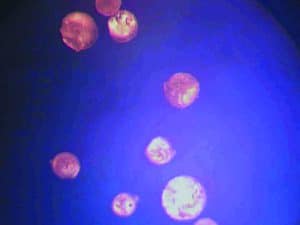
The photo on the left shows an OptiMSM® crystal after purification through quadruple distillation. No traces of contamination are visible on the crystal. The photo on the right, however, shows an MSM crystal obtained after ‘purification’ by the crystallization method. Not only does the crystal look different in shape, but traces of contamination are also clearly visible on the crystal. These traces can be organic contaminants, but also heavy metals.
Such MSM is supplied with certificates where the absence of molds, yeasts, and bacteria is often not guaranteed. Heavy metals are usually not listed individually but guaranteed as a ‘group’ up to < 20 ppm or < 10 ppm.
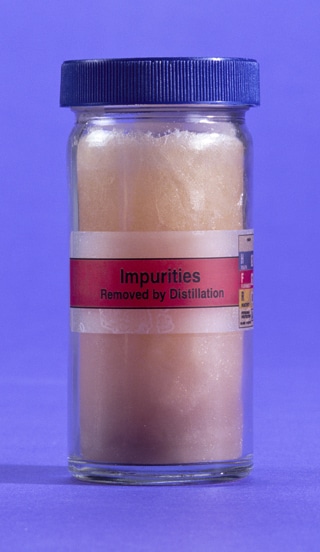
Heavy Metals or No Heavy Metals
The photo on the right shows OptiMSM® after distillation. There are no contaminants present. The photo on the left shows the contaminants that remain in the distillation setup. These are primarily heavy metals. These heavy metals do remain in the MSM from other producers. Bergstrom Nutrition is the only company in the world that uses the distillation method to purify MSM.
HOW DOES DISTILLATION REMOVE THE CONTAMINANTS?
Bergstrom Nutrition uses the expensive distillation method to purify MSM. In this method, MSM is heated to its boiling point (238ºC). The MSM vapor is collected, cooled, and recrystallized into MSM crystals. This method results in the highest purity:
- All substances with a lower boiling point evaporate before MSM begins to evaporate, thereby removing primarily volatile organic compounds that may be present as contaminants.
- All substances with a higher boiling point remain behind. These are mainly heavy metals.
Boiling Points:
Lead (Pb): 1740º C
Cadmium (Cd): 765º C
Arsenic (As): 613º C
Mercury (Hg): 356º C
In short, the levels of heavy metals in OptiMSM® are guaranteed to be up to 20,000 times lower than in other MSM!
The Discovery of MSM
Over forty years ago, Dr. Robert Herschler, a chemist working at the paper factory Crown Zellerbach Corporation, was asked to find a useful application for lignin, one of the factory’s waste products. Oxidizing the lignin in a reactor resulted in DMSO, a natural, organic form of sulfur. DMSO was not a new substance, as a Russian scientist had already created and described it in a German journal in 1867. Initially, Crown Zellerbach focused its research on the application of DMSO as a solvent for pesticides (!). One day, Dr. Herschler and a colleague accidentally got some pesticide dissolved in DMSO on their skin and became very ill. Investigations revealed that the pesticide, which normally couldn’t be absorbed through the skin, had somehow entered the men’s bodies. By then, Dr. Herschler had come into contact with Dr. Jacob, who was particularly interested in DMSO as an antifreeze agent for transplant organs. The two men discussed the incident and realized that DMSO had an unknown significant property: it could dissolve chemicals and transport them through the skin into the human body. Dr. Jacob wondered if DMSO could also be a carrier for medicines and began conducting small-scale experiments. DMSO applied to the skin was absorbed so quickly that test subjects could taste a bitter flavor in their mouths within minutes, and their breath acquired a garlic-like odor.
DMSO became a highly discussed substance. The pharmaceutical industry saw it as an ideal transport medium for delivering medications through the skin. However, in the early 1960s, the world was shocked by the ‘Thalidomide scandal.’ The drug Thalidomide, prescribed to pregnant women for nausea and vomiting, was found to cause congenital limb deformities in fetuses. Following this scandal, the U.S. Food and Drug Administration (FDA) decided to suspend the approval of new drugs. Consequently, the pharmaceutical industry lost interest in DMSO.
DMSO has been the subject of various international symposia. According to Dr. Jacob, more than 12,000 scientific publications on the biological applications of DMSO and 28,000 on its chemical properties have appeared over the years. In 1970, DMSO was approved in the United States as a medication for joint problems in dogs and horses. In 1978, it was approved in the United States as a human medication for interstitial cystitis, a rare bladder condition that primarily affects women.
However, due to its bitter taste and pungent odor, DMSO never became popular with the general public. Additionally, it often led to skin irritation when applied topically. In the late 1970s, Robert Herschler initiated further research into the natural metabolites of DMSO. This research was conducted at the Oregon Health Sciences University in Portland, led by Professor Stanley Jacob. Earlier research had already shown that MSM is the primary metabolite of DMSO. Once DMSO is absorbed by the body, about 15% is converted into MSM. Urine tests revealed that orally ingested DMSO was no longer detectable in the urine after 120 hours. However, MSM was still detectable after 480 hours. This delayed excretion is likely due to MSM forming stronger bonds with body tissues than DMSO. The researchers discovered that many of the medicinal properties attributed to DMSO were likely due to its metabolite MSM. Moreover, they found that MSM was much more user-friendly than DMSO: it is more stable, odorless, and does not cause skin irritation.
For a long time, the application of MSM was limited to the veterinary market and cosmetics, primarily due to fear of the strict FDA regulations. It wasn’t until the FDA relaxed its rules in the 1990s that MSM became available as a dietary supplement for humans.
Composition
OptiMSM® Powder contains the following ingredient:
Ingredients
| Two measuring scoops (daily dosage) contain: | %RI* | |
|---|---|---|
| OptiMSM® | 2 grams | - |
* RI = Reference Intake
Ingredients: MSM (methylsulfonylmethane 100%) OptiMSM® ‘Coarse’ powder 250 grams (100% pure OptiMSM®). A convenient measuring scoop is included. One level scoop contains 1 gram of OptiMSM® powder.
Guaranteed free from: Preservatives, synthetic fragrances, colors, and flavors.
Use & dosage
Recommended use
| For whom | Daily dosage |
|---|---|
| Adults: | Twice daily 1 to 2 grams |
| Children: | Convert based on body weight |
Daily Dosage: Adults dissolve 1-2 grams of MSM powder in some water or another liquid twice a day (or as recommended). For rapid absorption, take the liquid on an empty stomach or before meals. The dosage for children should be adjusted according to body weight.
Mandatory Notice: A dietary supplement is not a substitute for a varied diet. A varied, balanced diet and a healthy lifestyle are important. This product is a dietary supplement (contains MSM).
Safety: Consult a healthcare professional before using supplements during pregnancy, lactation, when taking medication, or if you have a medical condition.
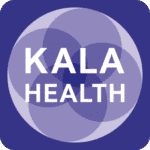
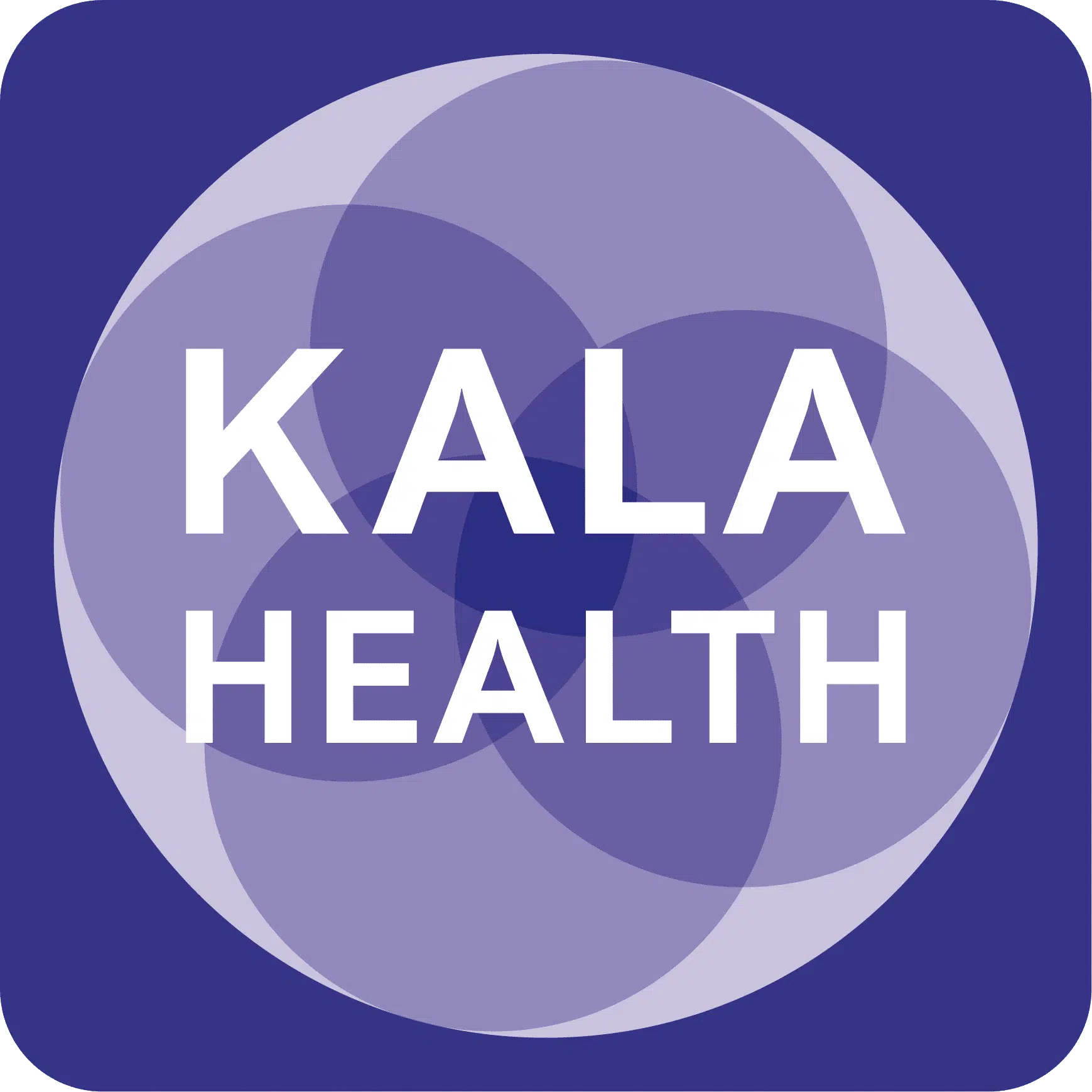
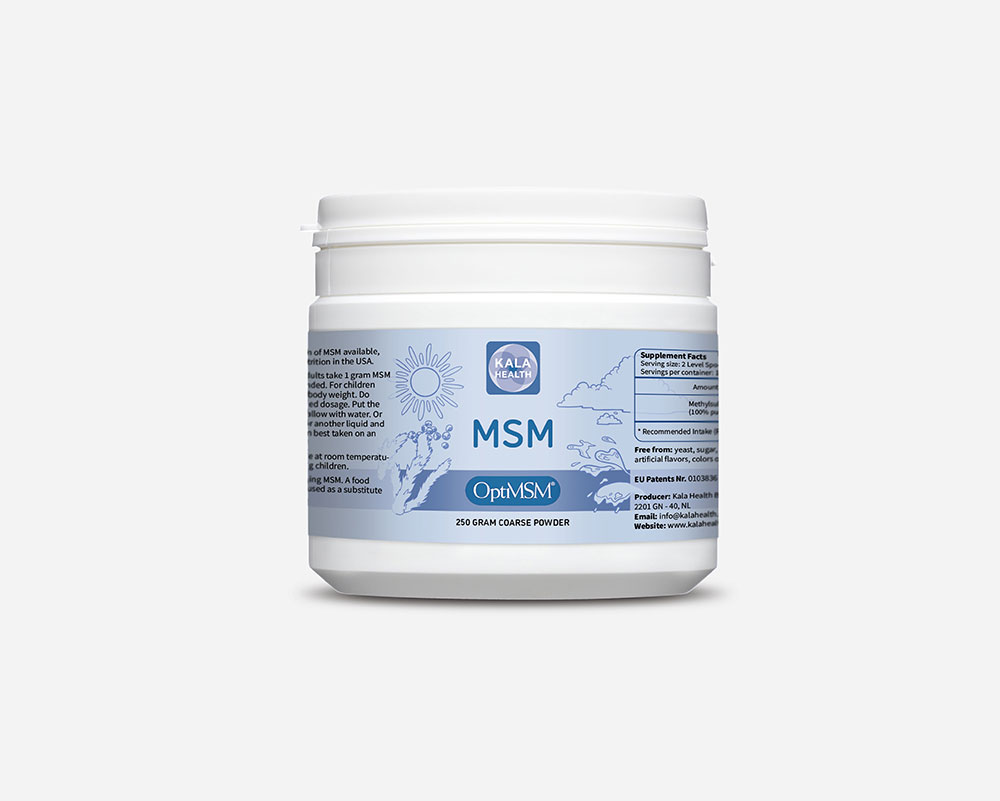
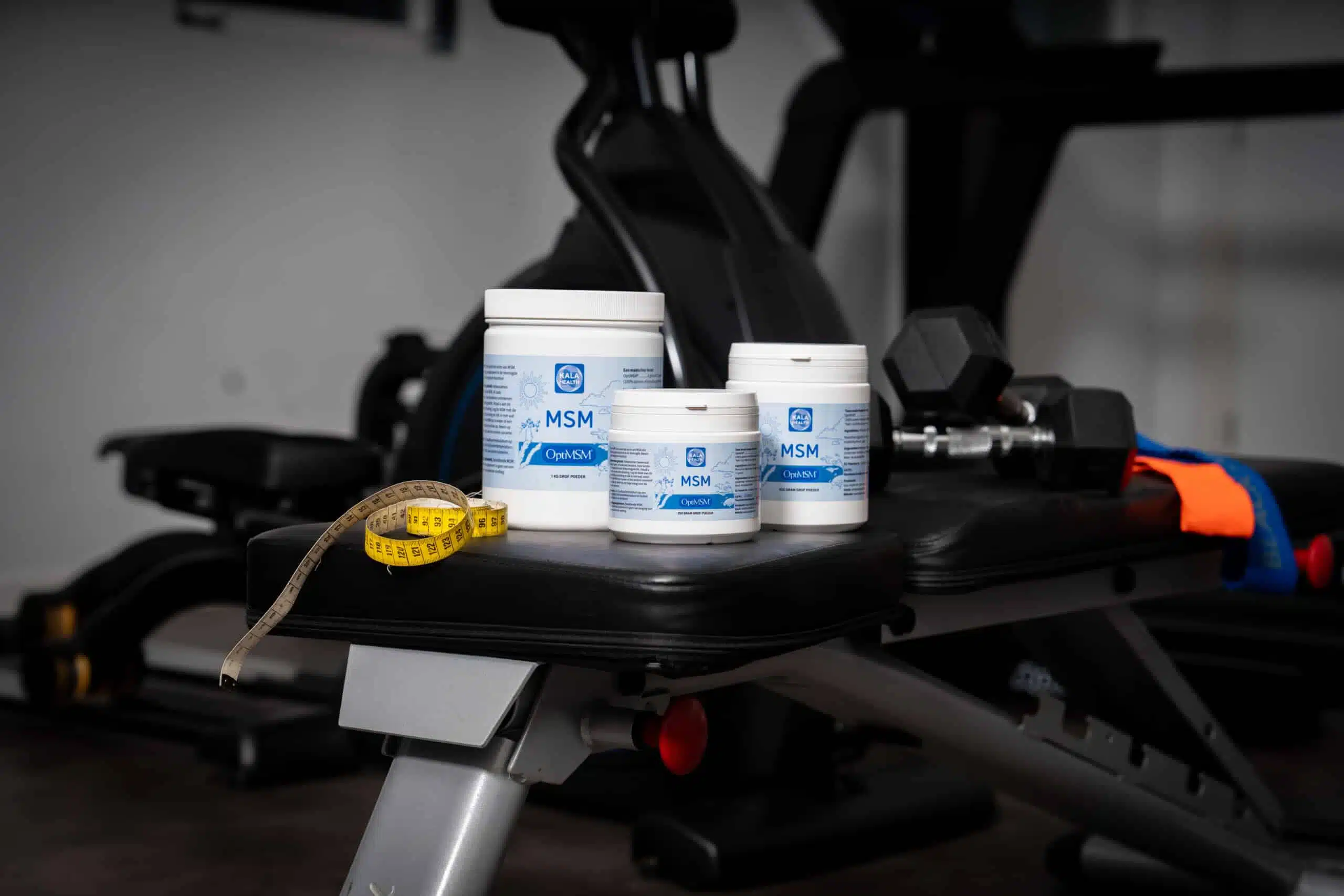
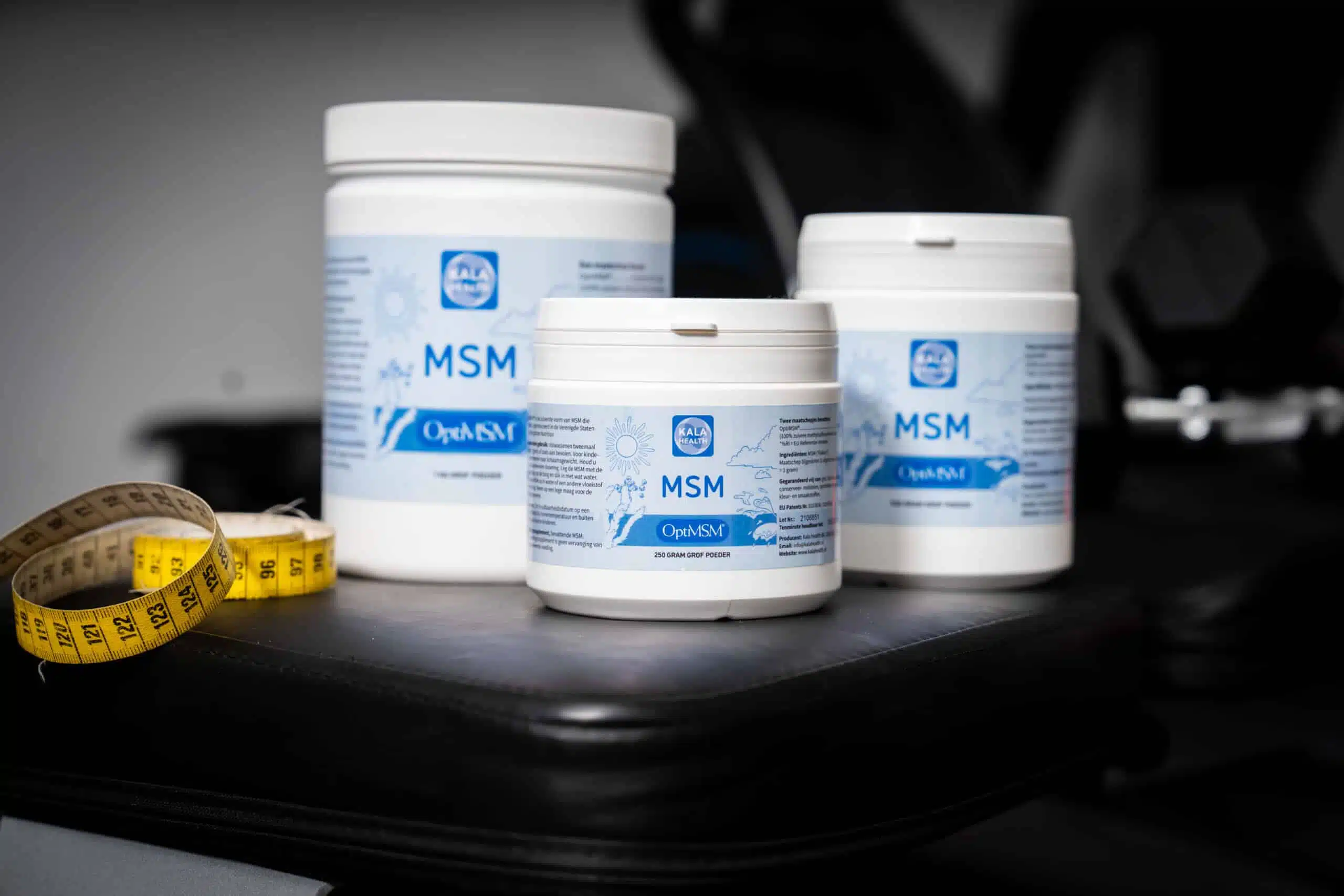

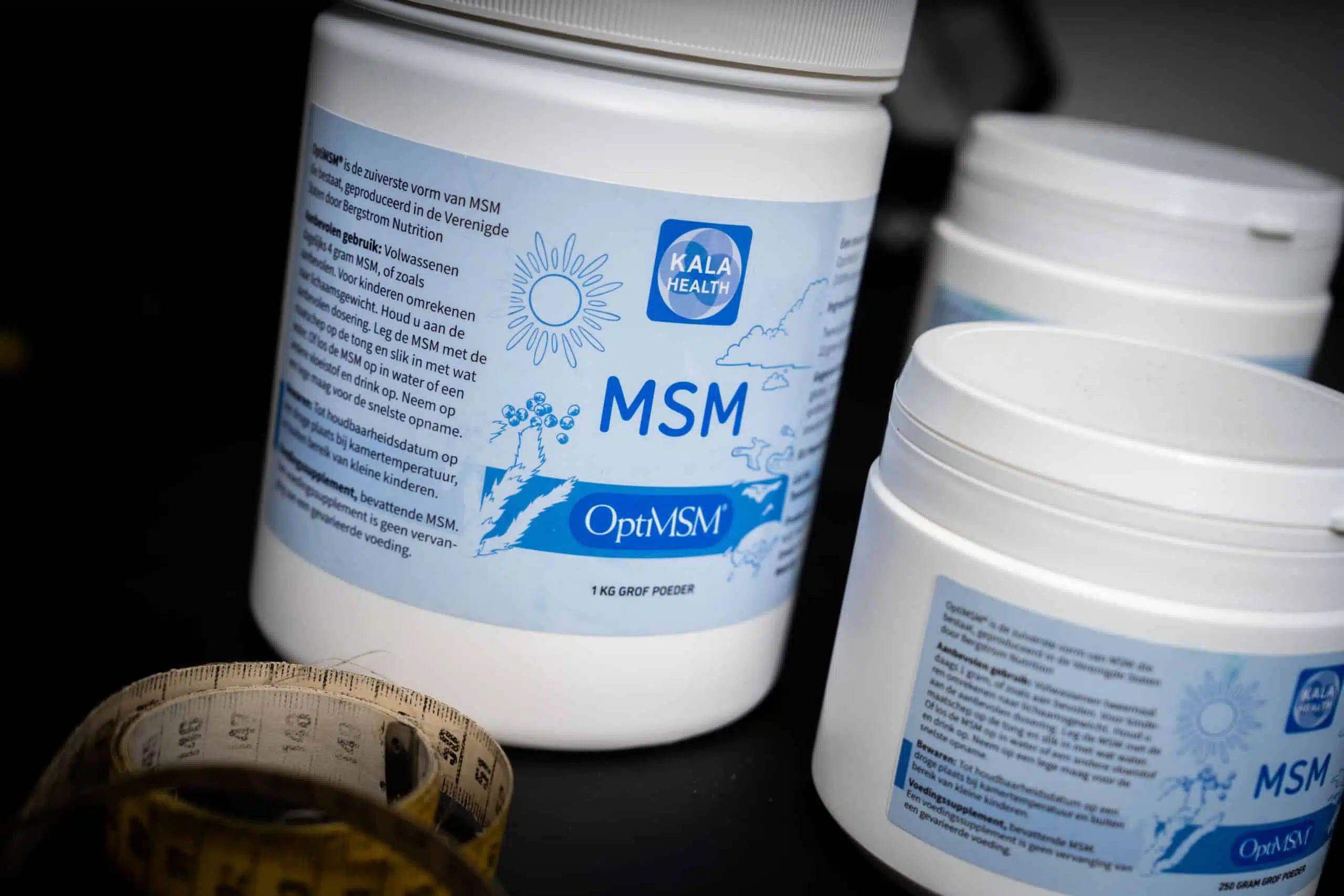




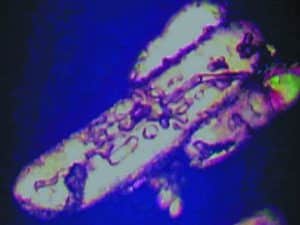
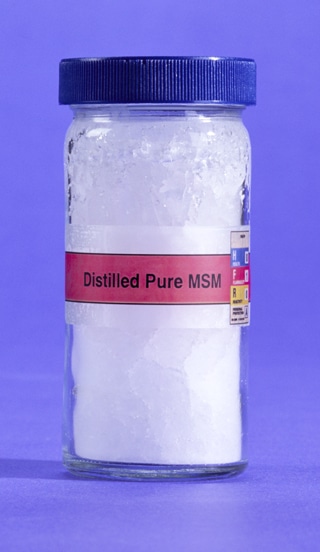
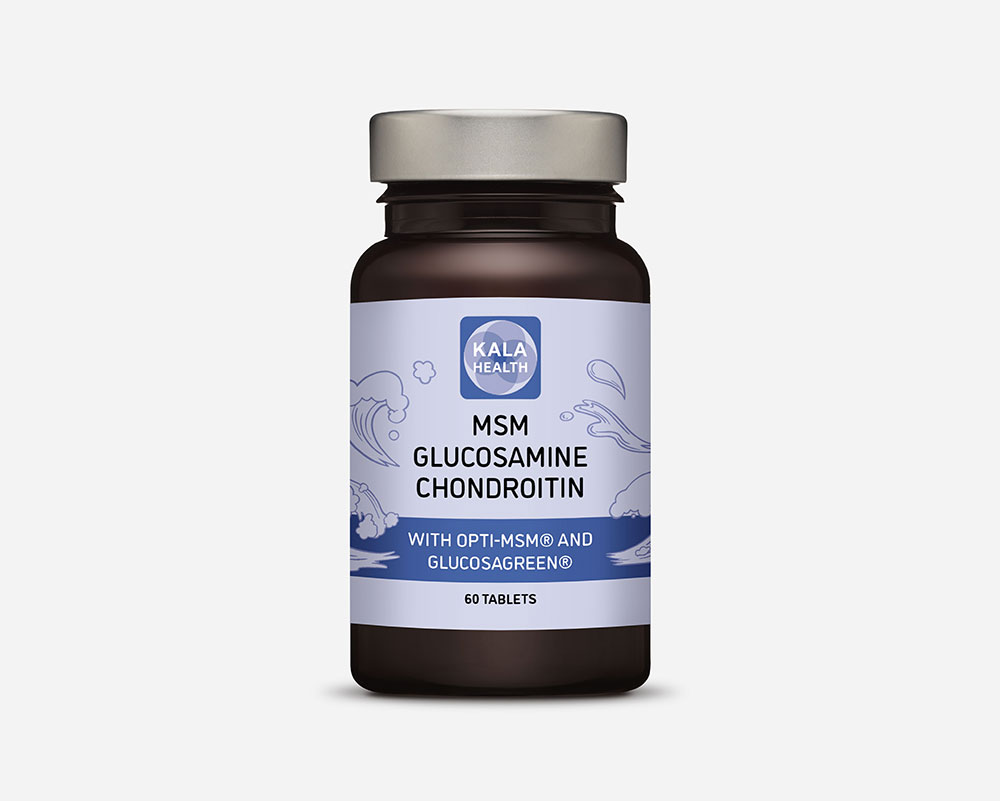
 60 or 180 tablets
60 or 180 tablets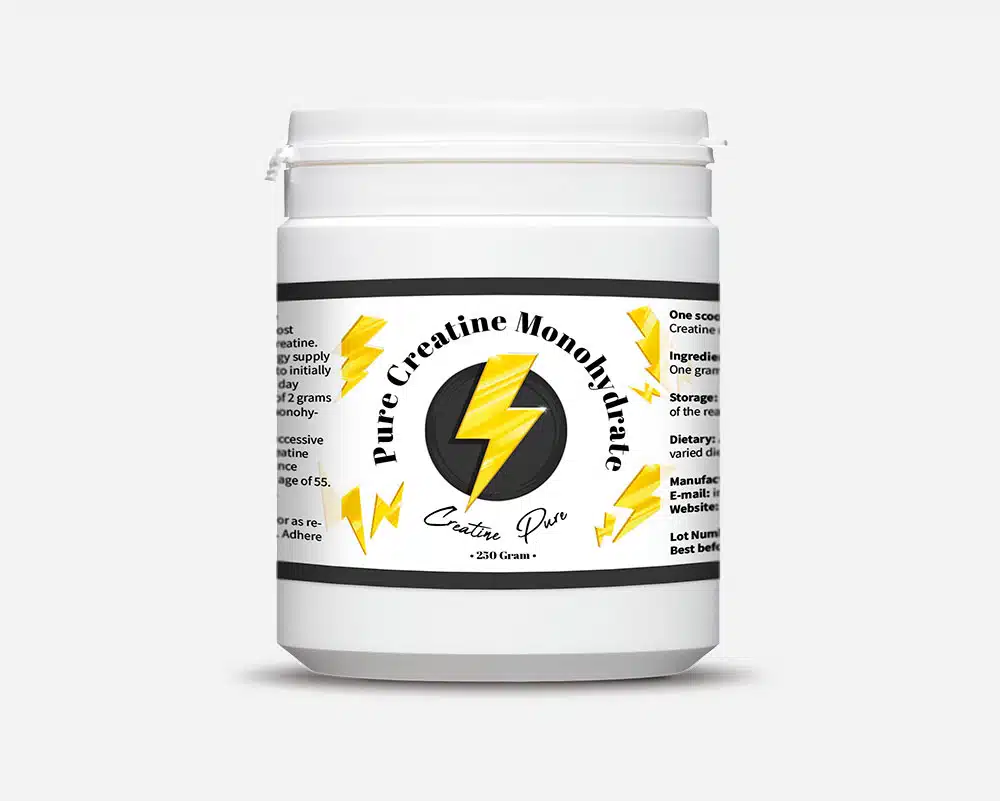
 250 or 500 gram
250 or 500 gram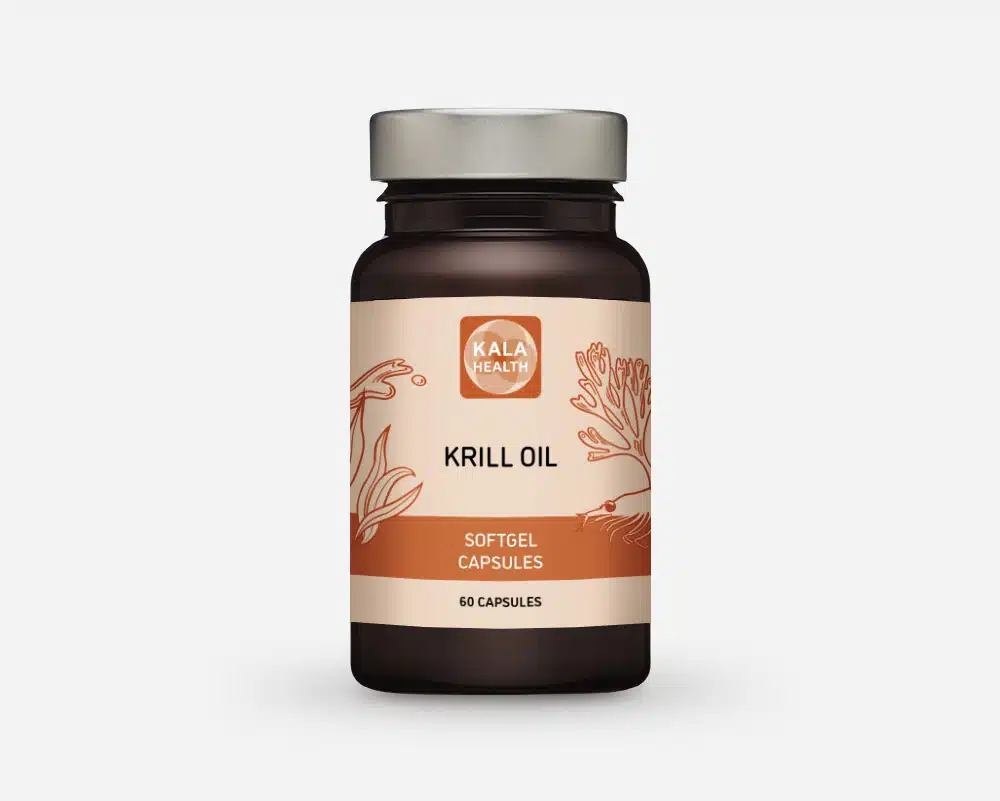
 60 or 180 Softgels
60 or 180 Softgels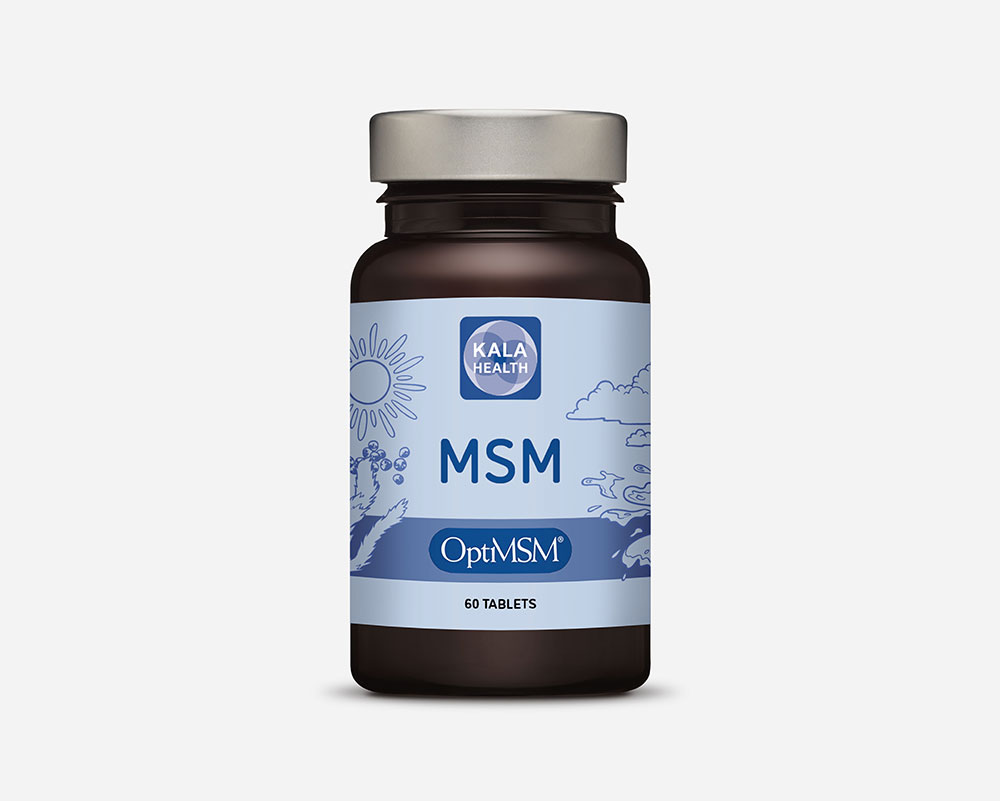

FAQ